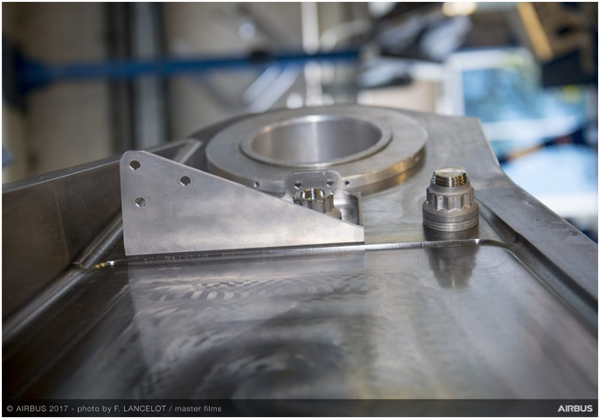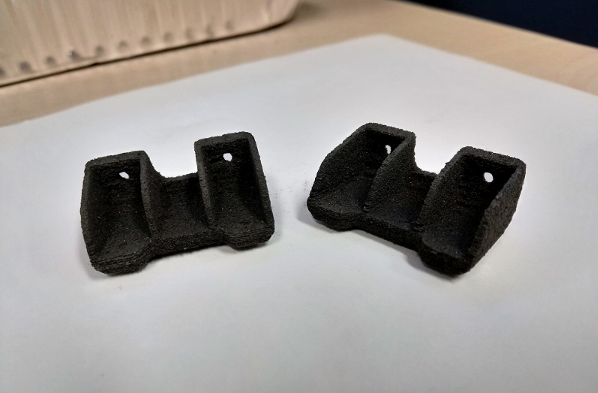
Charles Goulding and Dylan Comerford take a look at Arconic’s work in 3D printing.
Arconic is a large manufacturing company that was the result of the 2016 Alcoa split whereby the company Alcoa was split into two entities, Alcoa Corporation and Arconic. Arconic employs 41,500 people globally and boasts $13 billion in revenue as of 2017. Arconic also has roots in the aerospace industry. Recently, the company has had some legal troubles due to their involvement in the Grenfell Tower fire, as the tower was alleged to have been combustible due to Arconic’s cladding products. Arconic had been in talks with Apollo Global Management LLC, partly due to the Grenfell Tower fire, who wanted to purchase Arconic for $10 billion. However, this transaction recently fell through due to disagreements over Apollo’s dividend policy and pension obligations.
Arconic has been making great strides in the realm of 3D printing, specifically with their aerospace work. Additive manufacturing in the aerospace industry can allow components with complicated dimensions and stringent property specifications to be manufactured quickly in a cost efficient manner. Other benefits include the creation of lightweight components and ease of production planning due to what is generally a tool-less production process. These lightweight components can potentially yield more fuel efficient airplanes. Selective Laser Sintering (SLS) is one process that can lead to some of these benefits. In addition to conventional additive manufacturing methods, Arconic also uses their patented Ampliforge process. Ampliforge is a combination of additive manufacturing and traditional manufacturing; a part is designed and printed using 3D printing, then an advanced manufacturing process, for example forging, is used to complete the part. Ampliforge can potentially lead to enhanced properties of the parts such as increased toughness, fatigue, and overall strength. This combination of processes results in parts that can meet the given specifications for forging while, at the same time, providing lower tooling costs, fewer forging operations, and generally better material utilization.

For companies like Arconic, these advancements and potential improvements indicate a need for more research into the field of additive manufacturing. According to Don Larson, Arconic’s Vice President of Research & Development for advanced manufacturing and advanced powders, Arconic first got involved with additive manufacturing over 20 years ago, using stereolithography to print plastic patterns for investment casting. However, some of Arconic’s biggest achievements have been occurring recently. In 2014 they produced four 3D printed vents for the Orion spacecraft, utilizing nickel super alloy material. These components ended up reducing production time immensely, going from a few weeks to roughly 40 hours. When Orion completed its four hour test flight the 3D printed vents showed no signs of damage, marking an important achievement for Arconic.
Arconic is still continuing to progress and work toward new advancements. In 2015 Arconic completed their acquisition of RTI International Metals, a leader in titanium and specialty metal products for the aerospace industry. This helped further Arconic’s grasp on the special metal aerospace market, and further established them as a significant contributor to the additive manufacturing aerospace industry.
In 2016 Arconic continued their expansion into the 3D printing market, opening a new facility to produce titanium, nickel, and aluminum powders for aerospace 3D printing. Moreover, in September of 2017 Arconic worked with Airbus to achieve a first in the 3D printing industry. They were responsible for the installation of a 3D printed titanium bracket on a series of production Airbus commercial aircraft. This was important as it was a significant step toward more complicated 3D parts in the aerospace industry. Additive manufacturing was often used for airplanes, however no company had equipped airframes with metal parts produced by 3D printing. This achievement was further compounded in November of 2017 when Arconic announced a multi-year cooperative research agreement with Airbus to advance 3D printing for the aerospace manufacturing industry. The companies wanted to work together in a way that combined the expertise in their respective fields. Arconic is working with Airbus to develop customized processes in order to build larger 3D components. As previously mentioned, larger airplane components are not normally manufactured with 3D printing, making this a step in the right direction for additive manufacturing in the aerospace industry.
The Research & Development Tax Credit
Enacted in 1981, the now permanent Federal Research and Development (R&D) Tax Credit allows a credit that typically ranges from 4%-7% of eligible spending for new and improved products and processes. Qualified research must meet the following four criteria:
-
Must be technological in nature
-
Must be a component of the taxpayers business
-
Must represent R&D in the experimental sense and generally includes all such costs related to the development or improvement of a product or process
-
Must eliminate uncertainty through a process of experimentation that considers one or more alternatives
Eligible costs include U.S. employee wages, cost of supplies consumed in the R&D process, cost of pre-production testing, U.S. contract research expenses, and certain costs associated with developing a patent.
On December 18, 2015, President Obama signed the PATH Act, making the R&D Tax Credit permanent. Beginning in 2016, the R&D credit can be used to offset Alternative Minimum tax for companies with revenue below $50MM and for the first time, pre-profitable and pre-revenue startup businesses can obtain up to $250,000 per year in payroll taxes and cash rebates.
Arconic’s Future Developments in 3D Printing
Looking toward the future, Arconic is projected to continue growing in its 3D printing practices. In July of 2018 they entered a two year Joint Development Agreement (JDA) with Lockheed Martin, aiming to make improvements for future aerospace solutions. The JDA aims to develop state-of-the-art materials with more advanced technical capabilities. Arconic was also recognized as one of five key players in the global isostatic pressing market in a report analyzing the market for the years of 2019-2023.











A blog post reveals much of what happens behind the scenes at 3D print service Shapeways.